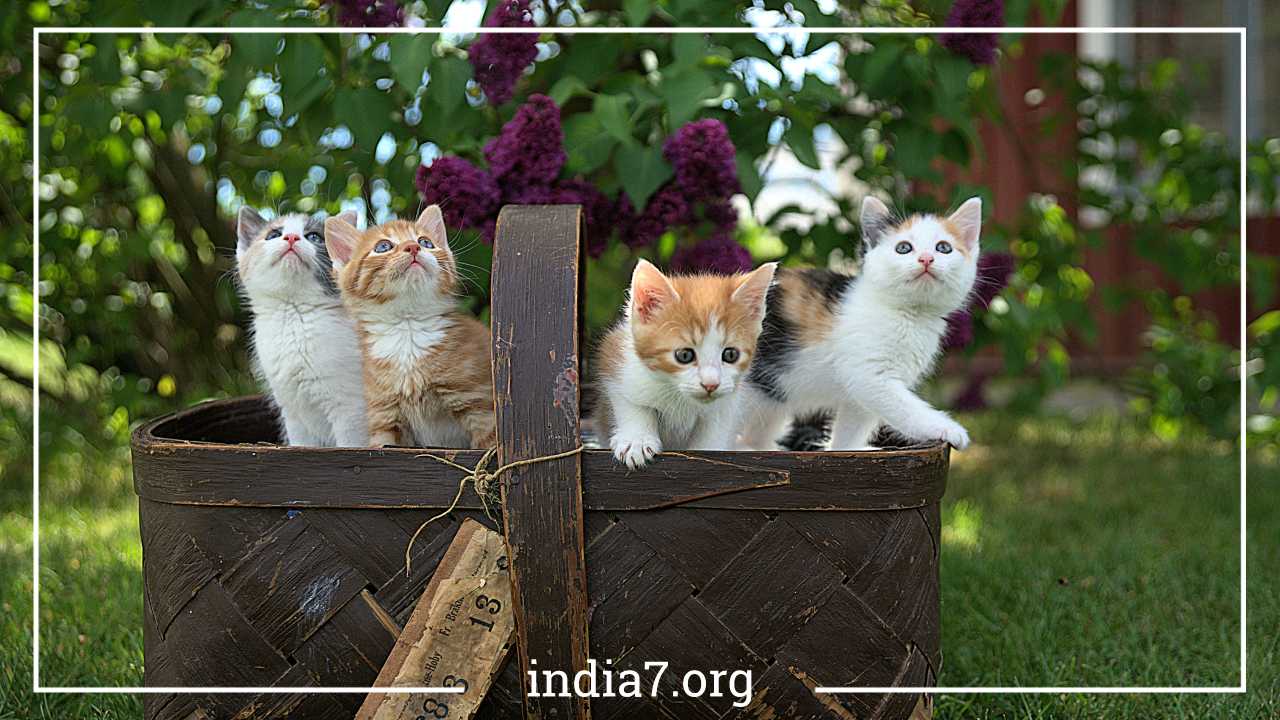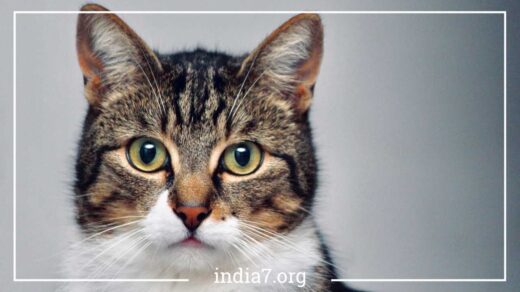Exploring Cat Breeds: Origins, Characteristics, and Diversity

Cat Breeds
Cats, those enigmatic and graceful creatures that share our homes and hearts, have a long and storied history of coexistence with humans. Over thousands of years, they have not only adapted to human life but have also been selectively bred to create a plethora of distinct cat breeds.
This journey from wild hunters to beloved companions is a testament to our deep and complex relationship with these fascinating animals. In this extensive exploration, we will delve into the world of cat breeds, examining their origins, characteristics, and the unique qualities that make each breed special.
The Evolution of Cats and Early Breeding
Cats, scientifically known as Felis catus, have a lineage that can be traced back to their wild ancestors. The domestication of cats likely began in the Near East, where wildcats were attracted to human settlements due to the presence of rodents. Initially, these wildcats formed a mutualistic relationship with humans by helping control the rodent population in exchange for food scraps. This partnership laid the foundation for the eventual domestication of cats.
In the early stages of this relationship, the primary goal was to have cats as effective hunters and protectors of grain stores. Cats proved their worth as pest controllers, and humans began to value them for their hunting prowess. However, it wasn’t until the ancient Egyptians that we see the first indications of selective breeding for specific traits.
Ancient Egyptian Influence
The ancient Egyptians revered cats and considered them sacred animals. Cats were associated with the goddess Bastet, who was the goddess of home, fertility, and childbirth. Killing a cat, even accidentally, was punishable by death in ancient Egypt. Cats were not only cherished as companions but also bred for specific characteristics.
The Egyptian Mau is often cited as one of the earliest selectively bred cat breeds. These cats were prized for their distinctive spotted coat patterns, and efforts were made to propagate these traits. The Egyptian Mau’s legacy lives on today, as it remains one of the recognized breeds in various cat registries.
The Emergence of Distinct Breeds
As time passed, the desire to shape cats to human preferences grew stronger. It was not only about their hunting skills but also about their appearance and temperament. The breeding of cats with specific traits led to the development of distinct breeds. While it’s difficult to pinpoint when the first “official” cat breeds emerged, historical records provide evidence of various breeds being established in different regions.
Siamese Cats
One of the most iconic and recognizable cat breeds, the Siamese cat, has a long history. These cats are believed to have originated in Thailand (formerly Siam), and they were highly regarded by Siamese royalty. Siamese cats are known for their striking blue almond-shaped eyes, short coat with color points (darker color on the ears, face, paws, and tail), and distinctive vocalizations.
Siamese cats made their way to Europe in the 19th century and quickly gained popularity due to their unique appearance and engaging personalities. They are known for their social and affectionate nature, making them cherished companions.
Persian Cats
The Persian cat, with its long, luxurious coat and sweet disposition, is another breed with a rich history. It is believed that Persian cats originated in Persia (modern-day Iran) and were introduced to Europe through trade routes. Their exquisite appearance, calm temperament, and regal bearing made them a favorite among European aristocrats.
Persian cats come in a variety of colors and patterns, and their grooming needs require regular attention. Their distinctive flat, brachycephalic faces are a hallmark feature of the breed. Persian cats have remained one of the most beloved and sought-after breeds in the world.
Japanese Bobtail
The Japanese Bobtail is a breed with a history that spans over a thousand years. These cats are native to Japan and have a distinctive bobbed tail, which is a result of a genetic mutation. In medieval Japan, they were revered for their unique appearance and were considered lucky charms.
However, the Japanese Bobtail’s population declined over the centuries, and they are now a rare breed even in their native land. Efforts to preserve and promote the breed continue to this day, and it is recognized by cat registries for its historical significance.
Cat Registries and Breed Recognition
The recognition and standardization of cat breeds are crucial for breed preservation and the establishment of breed-specific traits. Cat registries play a significant role in this process by setting breed standards and maintaining pedigrees. Various cat registries exist around the world, with some of the most prominent ones including:
The International Cat Association (TICA)
TICA is one of the largest cat registries in the world, recognizing over 70 different cat breeds. It is known for its inclusive approach, acknowledging a wide range of breeds, including some of the more exotic and rare ones. TICA’s standards are used as guidelines for breeders and judges in cat shows.
The Cat Fanciers’ Association (CFA)
The CFA is one of the oldest and most prestigious cat registries in the United States. It recognizes around 44 breeds and is known for its strict breed standards and comprehensive pedigree records. CFA-sanctioned cat shows are renowned for showcasing top-quality purebred cats.
The Governing Council of the Cat Fancy (GCCF)
Based in the United Kingdom, the GCCF is the primary cat registry for British pedigree cats. It recognizes a wide range of breeds and is responsible for maintaining breed standards for British and some international breeds.
Other Regional and National Registries
In addition to these global registries, many countries have their own national or regional cat associations that recognize and promote specific breeds. These associations often collaborate with international registries to ensure breed standardization and quality.
Diverse and Unique Cat Breeds
With over 70 recognized cat breeds and countless variations and hybrids, the world of cat breeding is incredibly diverse. Each breed possesses its own unique set of characteristics, from coat patterns and colors to personality traits and grooming needs. Let’s explore some of the most fascinating and distinctive cat breeds from around the world.
Bengal Cat
The Bengal cat is a breed known for its striking appearance, which resembles that of a wild leopard. They have a distinctive coat covered in spots and rosettes, which gives them a truly exotic appearance. Bengals are active, intelligent, and often enjoy interactive play with their human companions.
Maine Coon Cat
The Maine Coon is one of the largest domesticated cat breeds, known for its imposing size and friendly demeanor. They have a thick, water-repellent coat and a bushy tail, which are adaptations to their cold climate origins. Maine Coons are sociable and often referred to as “gentle giants.”
Ragdoll Cat
Ragdolls are known for their docile and placid nature, often going limp when picked up, hence the name “Ragdoll.” They have semi-long fur and striking blue eyes. Ragdolls are affectionate and tend to form strong bonds with their owners.
Scottish Fold Cat
The Scottish Fold is distinguished by its unique folded ears, which give it an endearing and distinctive appearance. These cats are known for their sweet disposition and are often described as being “people-oriented.” Scottish Folds come in various coat colors and patterns.
Sphynx Cat
The Sphynx is perhaps one of the most recognizable cat breeds due to its complete lack of fur. Despite their hairless appearance, Sphynx cats are known for their warmth and affection. They require regular bathing to maintain their skin health.
Abyssinian Cat
Abyssinians are known for their sleek, ticked coats and agile nature. They are active and playful, making them ideal companions for families with an active lifestyle. Abyssinians are often described as being “busy” cats due to their curious and adventurous personalities.
Birman Cat
Birmans are known for their striking blue almond-shaped eyes and silky, semi-long fur. They have a gentle and affectionate temperament, making them excellent companions. Birmans are believed to have originated in Burma (modern-day Myanmar).
Norwegian Forest Cat
The Norwegian Forest Cat, or “Wegies” as they are affectionately called, hails from the rugged forests of Norway. They have a thick, weather-resistant coat and a bushy tail. Wegies are known for their independent yet friendly personalities.
Burmese Cat
Burmese cats are known for their expressive and soulful eyes and their affectionate nature. They have sleek, muscular bodies and short, shiny coats. Burmese cats are highly social and thrive on human interaction.
Devon Rex Cat
The Devon Rex is recognized for its distinctive curly coat and large ears. They have a playful and mischievous personality, often engaging in acrobatic antics. Despite their unique appearance, they are known for being affectionate and people-oriented.
These are just a few examples of the diverse cat breeds that enrich our lives with their unique qualities. Each breed has its own charm, and the choice of a cat breed often depends on individual preferences and lifestyle.
The Importance of Responsible Breeding
While the pursuit of creating and preserving distinct cat breeds has led to the development of numerous wonderful breeds, it is essential to emphasize responsible breeding practices. Irresponsible breeding can result in health issues, both genetic and otherwise, for the animals involved.
Responsible breeders prioritize the health and well-being of their cats above all else. They adhere to ethical breeding standards, which include:
- Health Screening: Responsible breeders regularly screen their breeding cats for genetic disorders and health issues to ensure that they are not passing on hereditary diseases to their offspring.
- Socialization: Kittens from responsible breeders are well-socialized from a young age. They are exposed to various people, environments, and experiences to help them grow into well-adjusted cats.
- Proper Care: Breeding cats are provided with appropriate nutrition, medical care, and living conditions. They are not overbred or exploited for profit.
- Education: Responsible breeders educate potential cat owners about the breed’s specific needs, grooming requirements, and temperament. They also provide guidance on responsible cat ownership.
- Rehoming: Responsible breeders carefully screen potential adopters to ensure that their kittens go to loving and suitable homes. They often have contracts in place to protect the welfare of their cats.
Responsible breeding practices are essential to maintain the health and integrity of cat breeds. Potential cat owners should always seek out reputable breeders who prioritize the well-being of their cats and adhere to ethical breeding standards.
The Plight of Feral and Stray Cats
While the world of cat breeding has given rise to a wide range of beloved breeds, it’s important to remember the millions of cats that don’t belong to any specific breed. Feral and stray cats, often referred to as “alley cats,” make up a significant portion of the global cat population. These cats have not been selectively bred, and their lineage can be traced back to domestic cats that have reverted to a wild or semi-wild state.
The Alley Cat Dilemma
Alley cats face numerous challenges in their lives. They are exposed to harsh outdoor conditions, suffer from diseases, and face hunger and predation. Additionally, because they are not spayed or neutered, they contribute to the issue of cat overpopulation.
Cats are prolific breeders, capable of reproducing at a young age and having multiple litters each year. When left uncontrolled, their populations can explode, leading to overcrowded shelters and a cycle of suffering for these animals.
The Role of TNR Programs
To address the issue of feral and stray cat overpopulation, many communities and organizations have implemented Trap-Neuter-Return (TNR) programs. TNR involves trapping feral and stray cats, sterilizing them, providing medical care as needed, and then returning them to their original location.
TNR programs have proven to be an effective and humane way to manage feral cat populations. By preventing further breeding, TNR helps reduce the number of kittens born into a life of hardship. Additionally, sterilized cats tend to have improved health and live longer, healthier lives.
The Importance of Adoption and Responsible Ownership
For cats that are not suited to life outdoors, adoption is a lifeline. Shelters and rescue organizations work tirelessly to provide care and find loving homes for homeless cats, both purebred and mixed-breed. Adopting a cat from a shelter or rescue is a noble and compassionate choice that saves lives.
Responsible cat ownership also includes spaying and neutering companion cats to prevent unplanned litters. This simple step can have a significant impact on reducing the number of cats in need of homes and can help break the cycle of overpopulation.
The Future of Cat Breeding
The world of cat breeding continues to evolve as new breeds are developed and existing breeds are refined. Advances in genetics have allowed breeders to gain a deeper understanding of hereditary traits and health considerations, enabling them to make more informed breeding choices.
As we look to the future, it is essential that the principles of responsible breeding and compassionate care for all cats remain at the forefront. Preservation of breed standards, the promotion of genetic diversity, and the well-being of individual cats should always take precedence.
The relationship between humans and cats has come a long way from the early days of mutual pest control. Cats have earned their place as beloved members of our families, bringing joy, companionship, and comfort to our lives. Whether you have a purebred cat with a pedigree or a lovingly adopted alley cat, the bond between humans and felines is a testament to the enduring power of interspecies connection.
In conclusion, the world of cat breeds is a rich tapestry of history, genetics, and human ingenuity. From the majestic Siamese to the playful Bengal and the charming Scottish Fold, each breed offers a unique and delightful experience for cat enthusiasts. Yet, amidst the diversity of breeds, it is crucial to remember the importance of responsible breeding, adoption, and the welfare of all cats, whether they are pedigreed or found on the streets. Our love for cats transcends their lineage, and it is this love that will continue to shape the future of cat breeding and cat ownership for generations to come.



